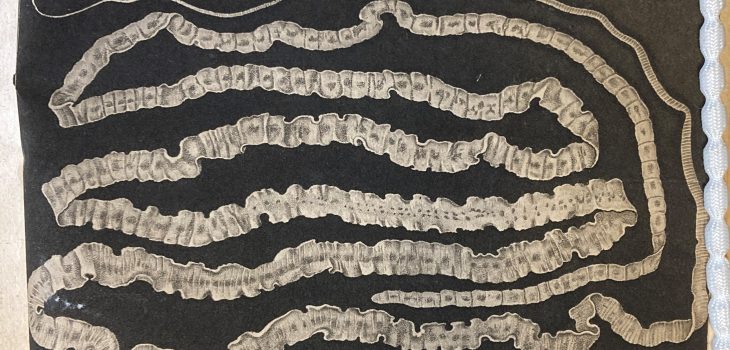The Austrian physician Johann Gottfried Bremser (1767-1827) was born in Wertheim am Main in present-day Germany. He studied medicine in Jena and Vienna where he obtained a licence to practice medicine in 1797. Bremser made a special study of parasitic worm infections in humans and travelled to Paris in 1815 to carry out further research. He experimented and developed remedies against worm infestations and he also treated poorer sections of the community. He actively promoted the benefits of vaccination against smallpox. He died in Vienna in 1827 aged 60.
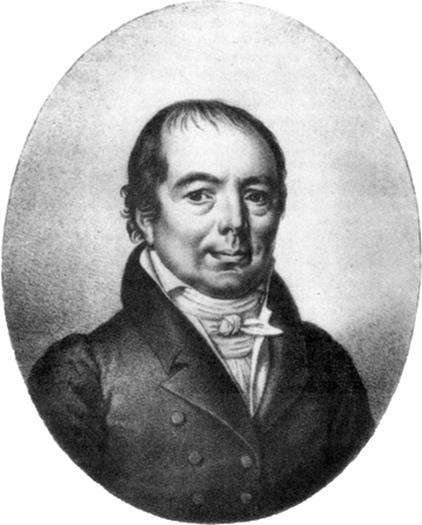
Portrait of Johann Gottfried Bremser (lithograph ca. 1820)
Vienna was a leading city of culture and science in the 18th century. Its Naturhistorisches Museum was making a special collection of parasitic worms found in humans and animals when Bremser joined it as a volunteer. In 1811 he was appointed curator of the helminth collection by which time 40,000 host animals had been dissected and he published host-parasite (and parasite-host) catalogues (Bremser 1811).
His book, Über lebende Würmer im lebenden Menschen [living worms in living humans] was also based on specimens in the museum collection (Bremser 1819).
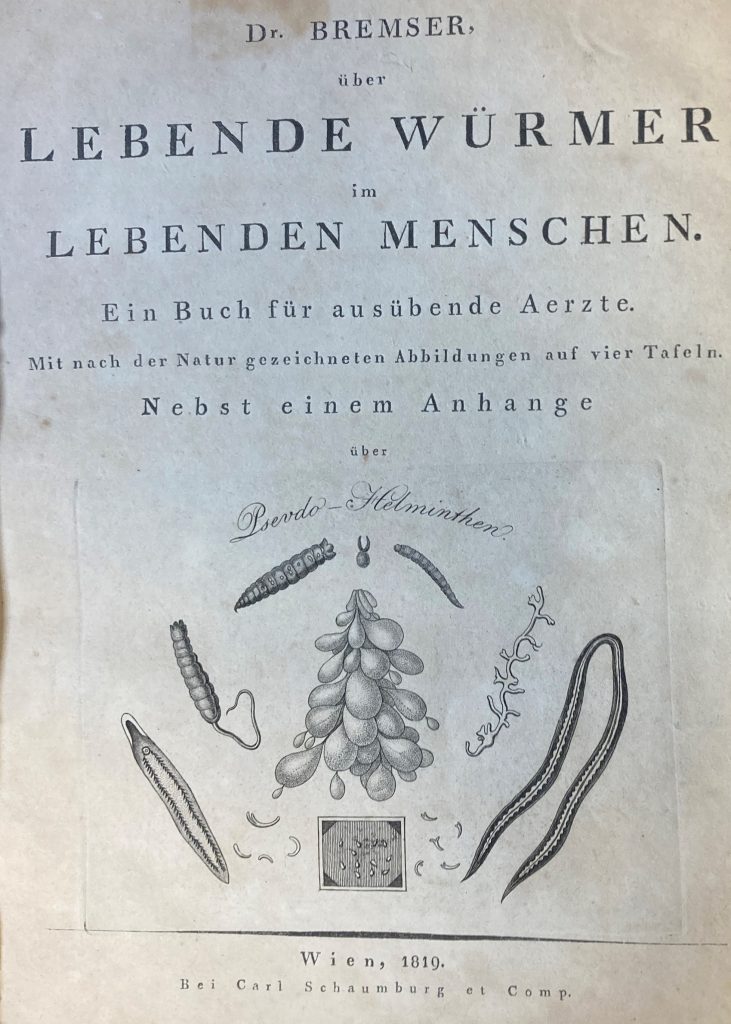
Titlepage of Bremser 1819 showing engraved vignette.
The book has 284 pages of text and four hand-coloured plates. Several parasitic worm species including nematodes, trematodes (flukes) and cestodes (tapeworms) are shown on each plate with each one identified and named in a key on the facing page. The plates are unusual because the worms are pictured against a black background, a practical solution sometimes adopted when depicting transparent or white objects. Most worms would have been white or grey when Bremser examined them – the same colour as the paper they were to be printed on – after whatever natural colour they may have had in life had been leached out by the preservative material. A black background gave a strong contrast to the worm figures, to which only light brown or grey watercolours were applied, and contributed to the visual impact of the picture.
These four plates were produced by engraving which was the traditional method for illustrating 18th and early 19th century books. The process was expensive as it involved the employment of an artist, an engraver to transfer the artist’s drawing onto a metal plate, a printer and a colourist and may explain why this book has only four plates. The names of the artist and engraver credited for the plates are Joh. Febmayer / Febmeir (1785-1866) and Austrian Heinr. Mansfeld respectively.
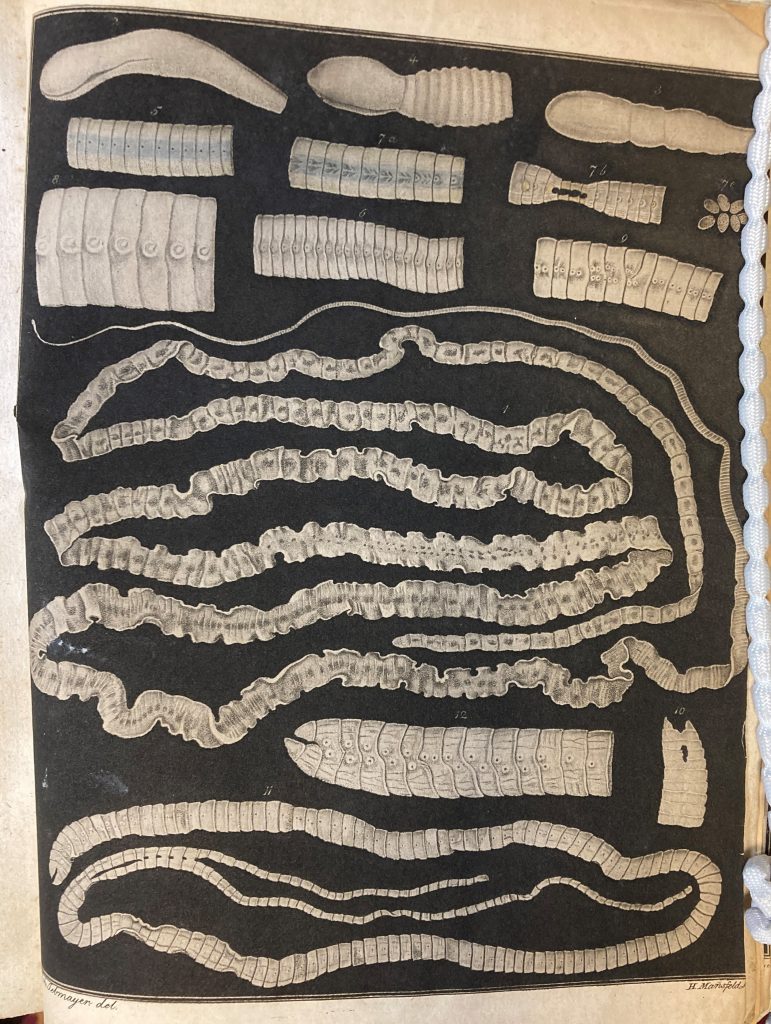
1819. Plate 2. Bothriocephalus latus, now Diphyllobothrium latum.
Bremser was the first person to write a scientific description of Bothriocephalus latus (now Diphyllobothrium latum) (Bremser 1819 : 88-96, pl 2; Scholz et al 2009 : table 1, p. 147). Diphyllobothrium tapeworms – commonly called broad tapeworms or fish tapeworms cause diphyllobothriosis in humans affecting an estimated 20 million people worldwide. It is caused by the consumption of raw or undercooked infected fish. They are among the largest human parasites and may grow up to 15 metres in length in the intestine. The maximum length recorded was 25 metres and had 4000 segments. They can grow 22 centimetres a day and may live for 20 years. In its life cycle the tapeworm has two intermediate hosts – first a copepod and secondly a fish – before coming to its final destination – a human’s intestine (Scholze et al 2009).
The 1819 copy of Bremser was presented to the LSHTM Library by the Medical College of Virginia on 26 November 1958 still in its original paper wrappers.
Five years after publication of the German edition an enlarged French edition was published in Paris Traite zoologique et physiologique sur les vers intestinaux de l’homme (Bremser 1824) with 12 hand-coloured lithographic plates. Lithography was invented in 1796 in Germany, a printing technique which involved drawing on a block of fine-grained limestone. Due to the relative ease of the process of lithography and cheapness compared to engraving, it became the most popular method of book plate illustration in the 19th century. Artists themselves frequently learnt lithography and the plates in this edition were both drawn and lithographed by Delevieux and printed by Charles-Louis Malapeaux (1795-c1878) in Paris. As in the 1819 edition all 12 plates have a black background, the figures coloured with grey shades of watercolours. A comparison of the figures in the two books shows that some in the 1824 book were copied from the 1819 plates in reverse.
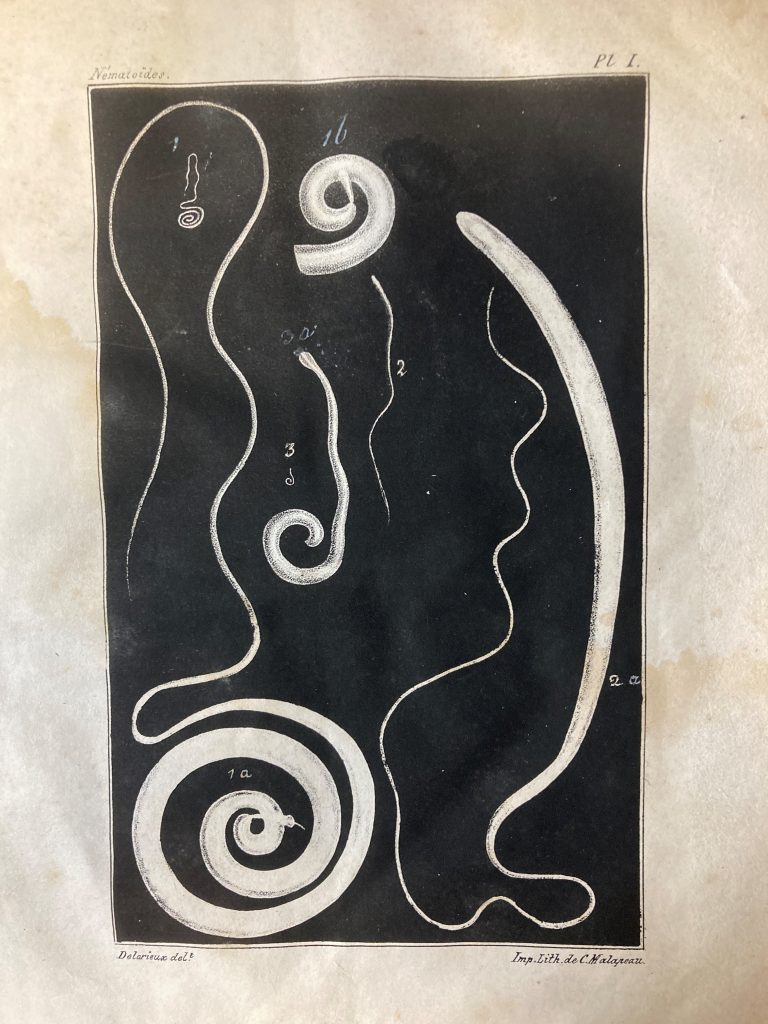
1824 Plate 1. Nematode species
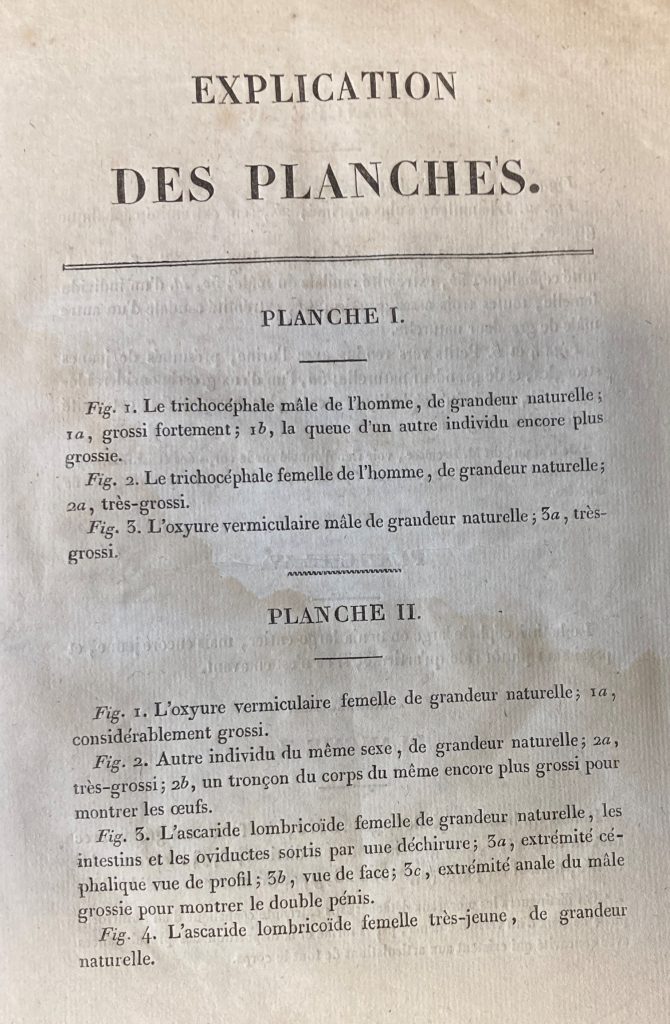
1824 Planche I Key to the plate of nematode figures

1824 Plate 5 Bothriocephalus
The LSHTM Library holds only the Atlas of 12 plates of the French edition (still with its original orange-coloured wrappers) which was acquired on 16 February 1951; a previous owner of this copy was a Robert D??kins M D 47 Finsbury Square [London] whose signature is in the front.
References
BREMSER, J.G., 1811. Nachricht von einer betrachtlichen Sammlung thireischer Eingeweidewürmer, und Einladung zu einer literarischen Verbindung, um dieselbe zu vervollkommen, und sie für die Wissenschaft und die Liebhaber allgemein nützlich zu machen. Vindobonae : Typis Antonii Strauss: 1811: 31, [1] pages;
BREMSER, J.G., 1819. Dr. Bremser, über lebende Würmer im lebenden Menschen : Ein Buch für ausübende Aerzte. Mit nach der Natur gezeichneten Abbildungen auf vier Tafeln. Nebst einem Anhange über Pseudo-Helminthen. Wien [Vienna] : Bei Carl Schaumburg et Comp. xii, 284 pages, [4] leaves, 4 plates (LSHTM Library *M 1819 fol) https://www.biodiversitylibrary.org/bibliography/9099 (viewed 14 June 2023)
BREMSER, J.G., 1824. Traite zoologique et physiologique sur les vers intestinaux de l’homme, Paris : Imprimerie de C.L.F. Panckoucke. [6] pages, 12 plates (LSHTM Library *M 1824 fol ATLAS only) https://www.biodiversitylibrary.org/bibliography/45345 (viewed 14 June 2023); https://www.biodiversitylibrary.org/bibliography/110058 (viewed 14 June 2023)
SATTMAN, H., 2000. Profile : Johann Gottfried Bremser (1767-1827). Systematic Parasitology 47 : 232-232 port.
SCHOLZ, T., GARCIA, H.H., KUCHTA, R., WICHT, B., 2009. Update on the human broad tapeworm (Genus Diphyllobothrium), including clinical relevance. Clinical Microbiology Reviews 22 (1) : 146-160. Doi: 10.1128/CMR.00033-08
LSHTM Library Rare Books Collection Blogs is an occasional posting highlighting books that are landmarks in the understanding of tropical medicine and public health. The Rare Books Collection was initiated by Cyril Cuthbert Barnard (1894-1959), the first Librarian, from donations and purchases, assisted with grants from the Carnegie United Kingdom Trust. There are approximately 1600 historically important rare and antiquarian books in the Rare Books Collection.
Many of the LSHTM Library’s rare books were digitized as part of the UK Medical Heritage Library. This provides high-quality copyright-free downloads of over 200,000 books and pamphlets for the 19th and early 20th century. To help preserve the rare books, please consult the digital copy in the first instance.
If the book has not been digitized or if you need to consult the physical object, please request access on the Library’s Discover search service. Use the search function to find the book you would like to view. Click the title to view more information and then click ‘Request’. You can also email library@lshtm.ac.uk with details of the item you wish to view. A librarian will get in touch to arrange a time for you to view the item.
Researchers wishing to view the physical rare books must abide by the Guidelines for using the archives and complete and sign a registration form which signifies their agreement to abide by the archive rules. More information is available on the Visiting Archives webpage.




